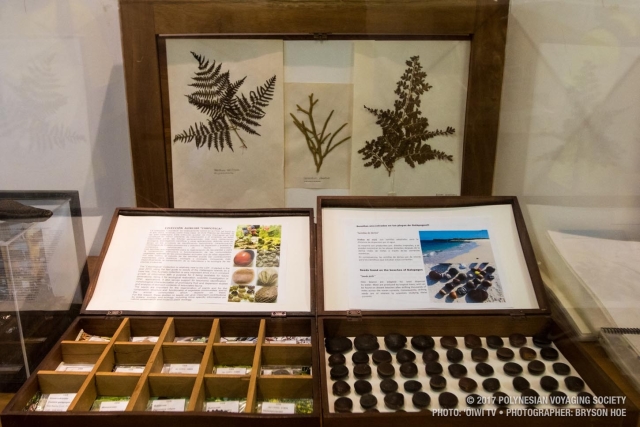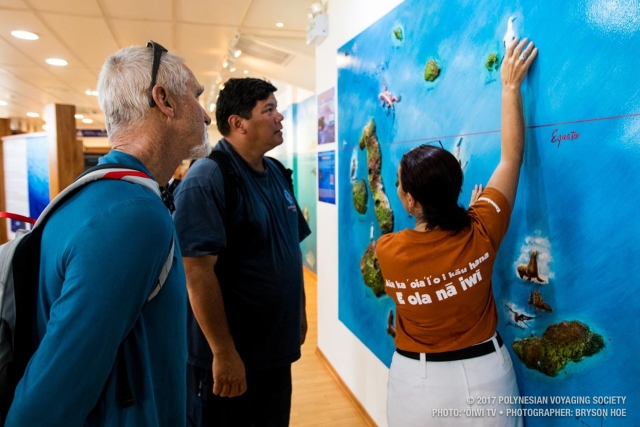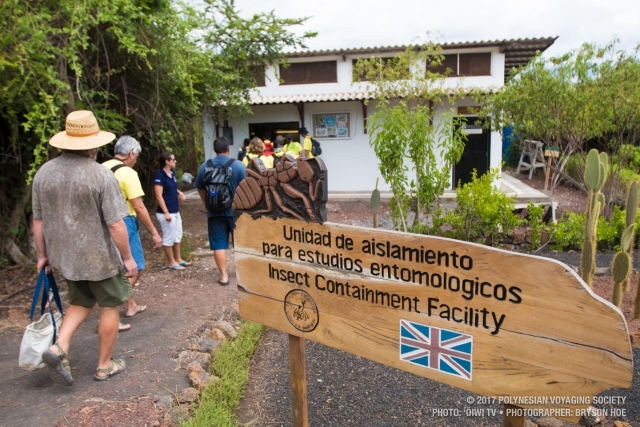
Hōkūleʻa Update| January 31, 2017
- Posted on 31 Jan 2017
- In Featured, Newsletter, Teachers, Updates
Yesterday was the first full day that we were here in Santa Cruz Island here in the Galapagos. The rest of leg 28 crew arrived yesterday as well so we now have the full complement of crew to continue on our Worldwide Voyage further into the Pacific ultimately looking for the tiny island of Rapa Nui that holds the south eastern edge of the Polynesian Triangle. The time here in Galapagos has been the usual quick paced interaction of logistics across spectrum. There are film permits to finalize, water to pickup, hotels to sort out, all the while in the 100% humidity and hot equatorial sun and light trade winds. Lucky for us, everyone has been very kind in helping us sort out where to go for the things we need. Part of the crew is just starting to explore a little bit today as the larger contingent of students from Kamehameha, Hālau Kū Māna and Castle High School are here to learn about this place. As these experiences teach them about the similarities and differences of the Galapagos and Hawaiʻi, some of our crew shadows them to learn as well.
As soon as we landed and they popped the back door of the small airbus amid a sea of blackened rock and little vegetation, it seemed like maybe we had landed in Kona. With little to no infrastructure on the island of Baltra, we took a short bus ride to the ferry for the short hop to Santa Cruz where some of the most amazing creatures persist in the wild. Very similar to Hawaiʻi the volcanic soil and sloping terrain took us from a barren looking landscape into the intense green of the middle of the island. The short 30-40 minute trip across the island transported us back home to what looked just like Waimea on the Big Island, horses and all. The mist shrouded puʻu reminded us that just because we were not technically back in Polynesia, we are in the Pacific and these places are not that different from what we see and feel back at home.
But then we got to the main town of Santa Cruz, and everything that we saw did not look anything like home. The Spanish influence from the two and three story walkups to the food stands that spill out into the streets at night are a reminder that we are not in Hawaiʻi anymore and that this place may have a lot of lessons embedded in the way these people interact with each other and this ʻāina. As it turns out, this place has protections similar to those that you would find in Papahānaumokuakea or the Northwest Hawaiian Islands. Hōkūleʻa had to be scrubbed top to bottom (literally) before entering and it turns out that my film permit application was still under consideration for acceptance. This is because the people who live and work here understand the knife-edge of the balance that has to be navigated to protect the wonders that sparked the way at which we started to understand how everything evolved on the planet for thousands of years. And amazingly some of those gifts are still here walking around like they own the place, cause basically they do. So we as visitors here will have an impact. We will consume the resources; we will interact with the flora and fauna that that will have an impact as well. But the measures in place here are so that the impacts can be minimized and that through the permitting process we can learn what to do and how to act in this strangely familiar place.
They measure the permanent human interaction here in decades not centuries. This place is still very wild. The saltwater iguanas walk through the streets and bask in the hot sun at mid-day to warm their scaly bodies. The tortoises are not far off the beaten path as we venture into the national park. And for me, that’s the best part of this place, we can effectively go back in time to get a better sense of what it was like before all the concrete and asphalt was laid down to claim the place we call home as ours. Before we carved it up to make house lots on what used to be prime farm land, our landscape was ruled by nature and balanced out so that the abundance that we see here could have been similar to what Hawaiʻi was like not more than a few generations ago… We are just starting our investigation here in Santa Cruz so we’ll let you all know what we find and how this fits into the lei of hope that we are sharing around planet through this Worldwide Voyage on Hōkūleʻa.
Well be standing by 72.
Aloha from crews 27 and 28,
Me ka haʻahaʻa,
Hōkūle‘a Homecoming – Save the Date
Sign up for updates and be the first to know as we continue to detail homecoming festivities during the week of Hōkūleʻa’s homecoming
on June 17, 2017!






















